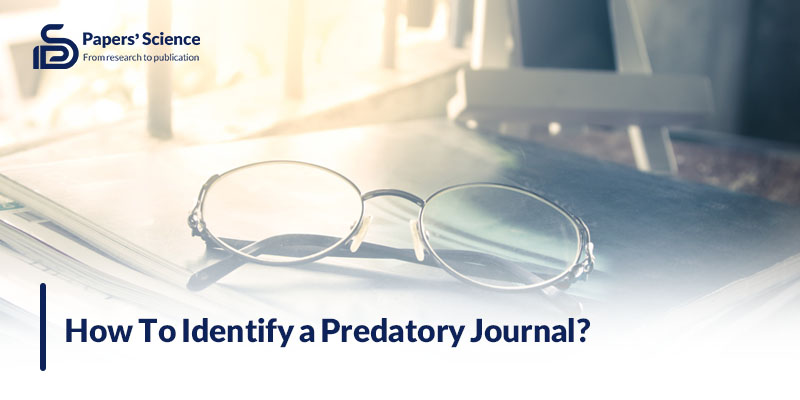How To Identify a Predatory Journal?

F irst, you need to know what the Predatory Journal is. Then, you can identify the predatory journals.
Fraudulent or pseudo journals, which are mainly named predatory journals, cover up as reputable academic publications while they lack the necessary editorial accuracy. These journals are not following the academic standards and they do not value the publishers.
These predatory outlets cheat authors by charging them to publish their work without reviewing or editing it.
How can you distinguish these predatory journals to avoid them? In this section we want to guide you to distinguish predatory outlets and try to avoid using them to respect the authors.
And if you are an author, you better not let them access your articles. Let’s be familiar with pseudo journals!
What Is a Predatory Journal?
As mentioned in the introduction part, Predatory journals (AKA: misleading or fraudulent journals) are unethical publishers that take advantage of researchers’ desire to publish their work in famous journals by providing short turnaround times and little or no editorial control.
They frequently go after early-career academics and collect author fees while failing to provide required quality control measures or follow ethical publishing norms.
In the section below, we are adding some practical tips for avoiding publishing in predatory journals by distinguishing them.
If you want to recognize predatory journals, keep reading.

How To Differentiate Between Legitimate & Predatory Journals?
Do you know what are the common characteristics of the predatory journals? Predatory journals often employ deceptive tactics to lure authors.
Red flags to identify predatory journals in your field are so simple, but it requires you to be more careful to avoid them. Let’s find out more. How can you distinguish between credible and fraudulent journals?
Tips for identifying predatory journals are:
1. Exaggerated turnaround times and claims of expedited peer review.
2. The site language is aimed toward authors.
3. There are typos and grammatical problems on the website.
4. The journal’s scope is unclear.
5. The journal’s procedures for revision, corrections/errata, and copyrighting are unclear.
6. There is no explanation of the manuscript processing procedure.
7. The fee for article preparation and publishing is relatively inexpensive.
8. The contact email address is neither professional nor associated with a journal.
9. Journals professing to be open access either maintain or fail to indicate copyright on published research.
10. There are no details as to if and how journal material will be saved and kept.
What are the other ways of examining a journal to find out if it is a predator one?
· Verify information on the journal website.
Look for the experts or other credible scientists from the field you are working in. Check for their contact information (such as their university webpage).
· Look for the journal’s editorial office location and see if you can verify the address.
These are the ways you can protect your research from predatory publishing practices. You have to know that all in all, the suspicious or, as we know, the predatory journals lack a unique identification number, called an ISSN, and are often not indexed on reputable abstracting or indexing services like MEDLINE, Scopus, PsycINFO, Web of Science, or other databases.
These fake journals may have names that closely resemble established journals but differ slightly, and unknown or untrustworthy publishers may publish them.
Predatory journals may send unsolicited emails inviting submissions, reviewers, or editorial board members, and their websites may resemble trade journals rather than scholarly journals.
Ø More importantly, fake or deceptive journals may accept advertising, which is uncommon in legitimate academic journals.
How To Assess the Credibility of a Journal Before Submitting?
a) The journal has to include or index in the major bibliographic databases for the specific field.
b) It should have a clear publishing history.
c) The journal should be peer-reviewed.
d) There has to be a reasonable time frame for a quality assessment of an article.
e) You can also look for its impact factor (IF).
Besides the IF, there are other bibliometric measurements available. You can get the help from them.
Read More: What Is Considered a Good Impact Factor for a Journal?
Conclusion: Stay Away from Predatory Journals!
In this section, we clearly talked about how to spot predatory journals to help you avoid using them.
Recognizing predatory journals is not so hard, as they have some common and bold features that we mention in the section above.
As Richtig* mentions: “Predatory publishing causes harm on a broad scale. At the most direct level, the author’s academic integrity and reputation are damaged both when one publishes high- and low-quality work in a predatory journal.”

So, use the tips above and avoid predatory journals! If you have any concerns regarding these journals, please ask us in the comments.



